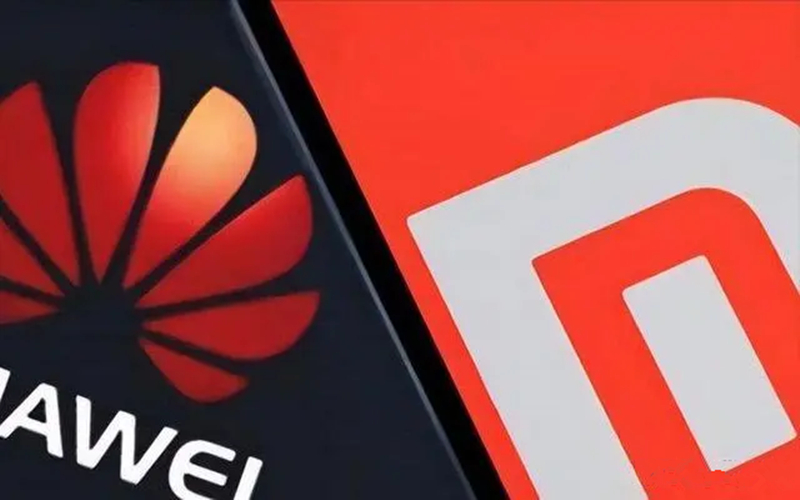Xiaomi "battles" Huawei.What is the motivation behind the lawsuit over patents?
On July 3, the State Intellectual Property Office issued a notice of oral examination, Xiaomi recently launched a request for invalidation of Huawei's patent called "a lock screen method and mobile terminal", which will be heard orally on July 21. According to public information, the oral hearing of a patent refers to the oral presentation of the invalid party and the invalidated party in court of their views and reasons for the validity of their patents.

Since this year, the patent dispute between Xiaomi and Huawei has continued. According to the Notice of Acceptance of Administrative Rulings on Major Patent Infringement Disputes published on page 02 of the State Intellectual Property News, the State Intellectual Property Office accepted Huawei's case against Xiaomi for patent infringement on January 17.
From the content of the announcement, the four patents involved in the dispute are: "Method and device for sending control signaling", "Method of feedback ACK/NACK information during carrier aggregation, base station and user equipment", "A method for obtaining A method and terminal for obtaining panoramic images" and "A lock screen method and mobile terminal". The invalidation request launched by Xiaomi was also aimed at one of the four Chinese patents that Huawei had previously filed for infringement by the respondent Xiaomi.
In response, Xiaomi responded: "Both parties are actively negotiating on patent licensing; China's IPR protection system provides diversified settlement mechanisms, including administrative and judicial mediation, and it is industry practice to resolve licensing issues through third-party mediation mechanisms; both Huawei and Xiaomi believe that IPR licensing and cooperation are conducive to promoting innovation and public interest, and consider mediation is an effective channel to help reach licensing. While continuing to actively negotiate, the parties seek to utilize diverse mediation mechanisms to assist them in reaching an agreement." No response from Huawei for now.
In fact, in addition to Huawei and Xiaomi, with the gradual maturation of 5G standards in recent years, communication technology patent strife has been raging, and domestic cell phone manufacturers are increasingly aware of the importance of patent reserves and technical strength. Nandu Bay News Agency reporter combing see, count past communications patent battle, domestic manufacturers such as millet, Huawei, OPPO, etc., but also with Qualcomm, Ericsson, Nokia and other giants of the communications industry has been a protracted patent litigation, the overall view of most of the litigation eventually towards a settlement.
What are the commercial purposes of the patent lawsuits launched by enterprises? Behind the dispute, it is worth thinking about whether patent disputes are often protracted, whether they are an effective way to compete, and whether they are beneficial to corporate innovation? How should cell phone manufacturers lay out in advance to prevent possible future risks?
Xiaomi "war" with Huawei:
The purpose of the lawsuit may be related to occupying the initiative for negotiation
In the patent dispute between Xiaomi and Huawei, Huawei sued Xiaomi first, and Xiaomi then launched an invalidation request against one of Huawei's patents.
What is an invalidation and is it common in the industry? Under what circumstances would a company consider taking such measures? Gao Jinghe, a lawyer at Bank of China (Shenzhen) Law Firm, analyzed to Nandu Bay News Agency that invalidating each other's patents between competitors to clear the obstacles to technology implementation or to avoid being awarded infringement and compensation is a common means to deal with the situation. He said that when enterprises face patent infringement lawsuits or harder to bypass the patent blockade, they often choose to seek a breakthrough through invalidation requests.
In addition, Gao Jing He said, invalidation request can also be used as a strategic means to influence the other party's patent layout or negotiation strategy. According to the competitive environment faced by enterprises, there are usually two types of invalidation requests: for enterprises to find that there are competitors' patents in the direction of research and development, which cannot be avoided or the cost of avoidance is too high, in order to remove the obstacles to research and development and reduce the risk of infringement later, enterprises will choose to initiate invalidation of competitors' patents; and when enterprises are sued by competitors for patent infringement or receive infringement warning letters, they will choose to file invalidation requests. When a company is sued by a competitor for patent infringement or receives an infringement warning letter, it usually chooses to file an invalidation declaration against the competitor's patent, so as to achieve the effect of putting pressure on the opponent or taking the bottom out. In addition, there is also a situation where an enterprise wants to license or cooperate with the invalidated party, but the two parties disagree on the licensing fees or other conditions, and the enterprise may also increase its bargaining power by requesting an invalidation.
In the view of Gao Jing He, the purpose of Xiaomi's invalidation request against Huawei's patent is to find a possible breakthrough by filing a patent invalidation request after both parties have reached an impasse in the patent licensing negotiation, so as to achieve the bottom of the bargaining power of not paying or increasing their own bargaining power in response to the other party's infringement allegations and forcing the other party back to the negotiation table.
As for the purpose of Huawei to initiate patent litigation, a person familiar with Huawei analysis, Huawei to manufacturers to infringe the patent prosecution, but also more in order to be able to take the initiative to carry out negotiations.
High patent fees occupy the cost
Xiaomi may have paid at least 35 billion yuan in patent license fees in the past 8 years
Why are cell phone patent battles commonplace? This is related to the large cost of patents in cell phones. Some people in the intellectual property sector revealed to the Nandu Bay financial news agency reporter that a cell phone has more than 100,000 patents, and if all of them pay patent fees as required, the cost of the phone will increase greatly, and may even exceed the cost of hardware.
In addition, according to research firm Strategy Analytics Emerging Device Technology Research Service previously pointed out in a report, 5G cell phones will bring patent holders nearly 20 billion U.S. dollars a year in 2025 for the global patent revenue, and Ericsson, Nokia and Qualcomm three companies will occupy the vast majority of these patent revenue.
This also means that domestic cell phone manufacturers not only face litigation from their domestic counterparts, but also face the risk of patent litigation from foreign communication giants in order to develop overseas markets. Taking Xiaomi as an example, Liu Zhen, general manager of Xiaomi Group's legal department, said in a previous interview with Nandu Bay Finance News Agency that Xiaomi has been facing greater intellectual property-related challenges since it started internationalization in 2014, handling about dozens of lawsuits each year. IPR as an industrial issue in the past few years has been more related to geopolitics, and these changes have brought additional risks.
Xiaomi Group partner and president Wang Xiang also previously said in an interview with Nandu Bay Finance and other media that global IP disputes have intensified in recent years and that IP challenges are part of Xiaomi's business model. However, because of the complexity of smartphone technology and the many patents involved, it is important not only to have a clear global strategy for IPR, but also to promote win-win, long-term sustainable IPR partnerships, in addition to encouraging innovative patents.
As it continues to expand into overseas markets and has to "short-change" patents with foreign communications giants, Xiaomi needs to pay high patent licensing fees to get patent owners to license a number of technology patents to Xiaomi. According to past annual reports, prospectuses and other public data, Xiaomi has paid at least RMB 35 billion in patent license fees in the past 8 years.
The high patent fees paid year after year, coupled with the high expenses of the new business of building cars, the lack of demand for cell phone products and other comprehensive factors, the pressure came to Xiaomi's "money bag". In recent years, Xiaomi has faced pressure on profitability, experiencing a significant decline in levels last year. 2022 financial results show that the company achieved total revenue of RMB 280 billion during the reporting period, down 14.7% year-on-year; adjusted net profit of RMB 8.5 billion, down 61.4% year-on-year. Meanwhile, Xiaomi's cell phone business also had the lowest gross margin among the three major businesses, falling to 9% from 11.9% in 2021, while the other two businesses, IOT and consumer lifestyle products and Internet services, were 14.4% and 71.8%, respectively.
Revenue decline in recent years
Huawei needs patent income to "bleed back" under the difficulties
Not only Xiaomi, Huawei has also accelerated the pace of patent rights in recent years. Huawei Managing Director, Terminal BG CEO, Intelligent Vehicle Solutions BU CEO Yu Chengdong previously said in response to the patent infringement problem: "In many industries, especially some Chinese companies, they are copying our design. Including some of our patents, people use them and do not pay us royalties, directly, and then also speak as their own patents, and even some things are directly copied."
It is reported that Huawei is a large global patent reserve. Huawei has been No. 1 in the world in patent cooperation treaty (PCT) applications for five consecutive years, and nearly 7,000 in 2021, setting an all-time high for PCT. By the end of 2021, Huawei held more than 45,000 validly granted patents (over 110,000) worldwide, of which more than 90% are invention patents.
And through patent licensing, Huawei's patent revenue has continued to grow in recent years. Huawei has previously disclosed that between 2019 and 2021, Huawei has received about $1.2 billion to $1.3 billion in patent licensing revenue from around the world. In December 2022, Huawei also signed patent cross-licensing agreements with OPPO, Samsung, Nokia and other manufacturers, which will inevitably drive further growth in Huawei's patent revenue.
Especially in recent years, Huawei continued to suffer from the crackdown, 2021, Huawei annual revenue of 636.8 billion, a sharp decline of 28.6%. Huawei expects 2022 revenue 636.9 billion yuan, compared to last year's revenue to achieve a slight increase in the plight of the need for patent revenue "back to blood".
For enterprises, through the patent licensing fees can get positive feedback on the results of innovation. Fan Zhiyong, director of Huawei's intellectual property department, said that the mutual recognition of intellectual property value among enterprises can promote the positive innovation cycle of "investment-return-investment" for high-value standard technology research, enhance the sustainable innovation capability of the industry, and provide more competitive products and services for consumers.
However, patent licensing should not become a threshold that hinders innovation. For the purpose of Huawei's patent fees, in the minutes of the "Patent Licensing Business Report" issued by Ren Zhengfei and disclosed in Huawei's Voice Community on April 6, 2022, it is mentioned that patent fees cannot be charged for the sake of charging; nor can they be too low, for if they are low, it will curb the innovation of the whole society, and no one will be willing to invest in R&D anymore. The main thing is to clarify the relationship between the two sides through communication and negotiation.
In the process of negotiation, a team good at communication and negotiation is gradually forged. When one day go to the world's leading position, it will be possible to reasonably allocate the value chain.
Behind communication patent strife:
How to anticipate the risk and seize the opportunity?
This patent dispute between Xiaomi and Huawei also triggered the thinking behind: in similar patent disputes, is there a better way for the two sides to obtain a settlement?
In Gao Jing He's view, due to the characteristics of technology standardization and product complexity in the field of communication technology, patent disputes often involve multiple subjects and multiple patents. In this case, simply solving the problem through litigation or invalidation request may lead to a lot of time, energy and money spent by both parties, and it is difficult to achieve a satisfactory result. Therefore, in similar patent disputes, both parties may consider adopting more flexible and cooperative ways to explore and try to achieve mutual benefits and win-win, such as sharing and utilizing patent resources through cross-licensing or joint development, and reducing patent costs and risks by establishing patent pools or joining patent alliances, etc. As we can see from the constant "burning" of patent disputes, the global IP layout is facing the risk pressure from technology iteration, fierce competition and patent licensing. As a cell phone manufacturer, how to lay out in advance to prevent these possible future risks and help enterprises seize the leading edge?
Gao Jing He said, communication technology patent dispute is an inevitable challenge for cell phone manufacturers, and cell phone manufacturers should do the following work in terms of patents: First, strengthen independent innovation, actively apply for and protect their own core technology patents, and form their own patent advantages and barriers; second, strengthen patent analysis, keep abreast of the industry's technology development trend and competitors' patent dynamics, and evaluate their own patent layout and risk status; third, strengthen patent management. Third, strengthen patent management, establish a perfect patent strategy and system, standardize their patent use and maintenance behavior, and avoid unnecessary patent disputes; fourth, strengthen patent cooperation, actively participate in the industry's standard-setting and patent organizations, seek cooperation opportunities with other cell phone manufacturers or technology providers, and realize the optimal allocation of patent resources.






